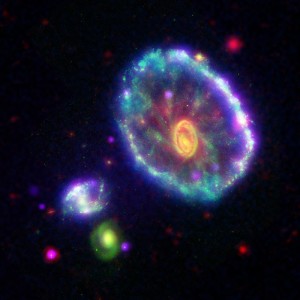Travels
Submitted by Devavani Chatterjea on Friday, 07/11/2014 9:41am




 Determined not to be cowed by my first hike, I started out again this morning, albeit on a safer route. My thoughts turned again to lost - being lost, feeling lost. We live in what we think is reality, but the Eastern mystics maintain it is an illusion. Pierce the veil of maya, or the illusion of reality, and you see it for what it is - an illusion.
Determined not to be cowed by my first hike, I started out again this morning, albeit on a safer route. My thoughts turned again to lost - being lost, feeling lost. We live in what we think is reality, but the Eastern mystics maintain it is an illusion. Pierce the veil of maya, or the illusion of reality, and you see it for what it is - an illusion.
I have finally chosen one of the 5-6 projects floating through my musical mind to focus on developing. Or perhaps it chose me. That doesn't matter just now. I should be able to complete it during this exciting residency. And while it is a bit early to speak about it in detail, I do want to share one 1'15" movement I've composed yesterday here. Its working title is tight but it may end up not having any more than a movement #X heading.

As you might expect, my job as the Resident Manager at the Djerassi Resident Artists Program is heavily influenced by the personalities and needs of the rotating artists in residence. Usually this means I’m surrounded by inspiring, generous, and interesting people. Those are the 99% (and let’s not talk about those 1%). After 2 ½ years here I generally know what to expect and am pretty comfortable with our little routine. But what about this Scientists/Artists mix?? What would it be like? Scientists come with variables unknown to our staff, and it made me nervous. Are they community minded?



 The gift of time becomes evident when you step out of your familiar routine. Time approaches the fluid state, evolving from the linear progression in which we normally view it. I have been given the gift of time while at a residency at Djerassi, the time to "just be".
The gift of time becomes evident when you step out of your familiar routine. Time approaches the fluid state, evolving from the linear progression in which we normally view it. I have been given the gift of time while at a residency at Djerassi, the time to "just be".